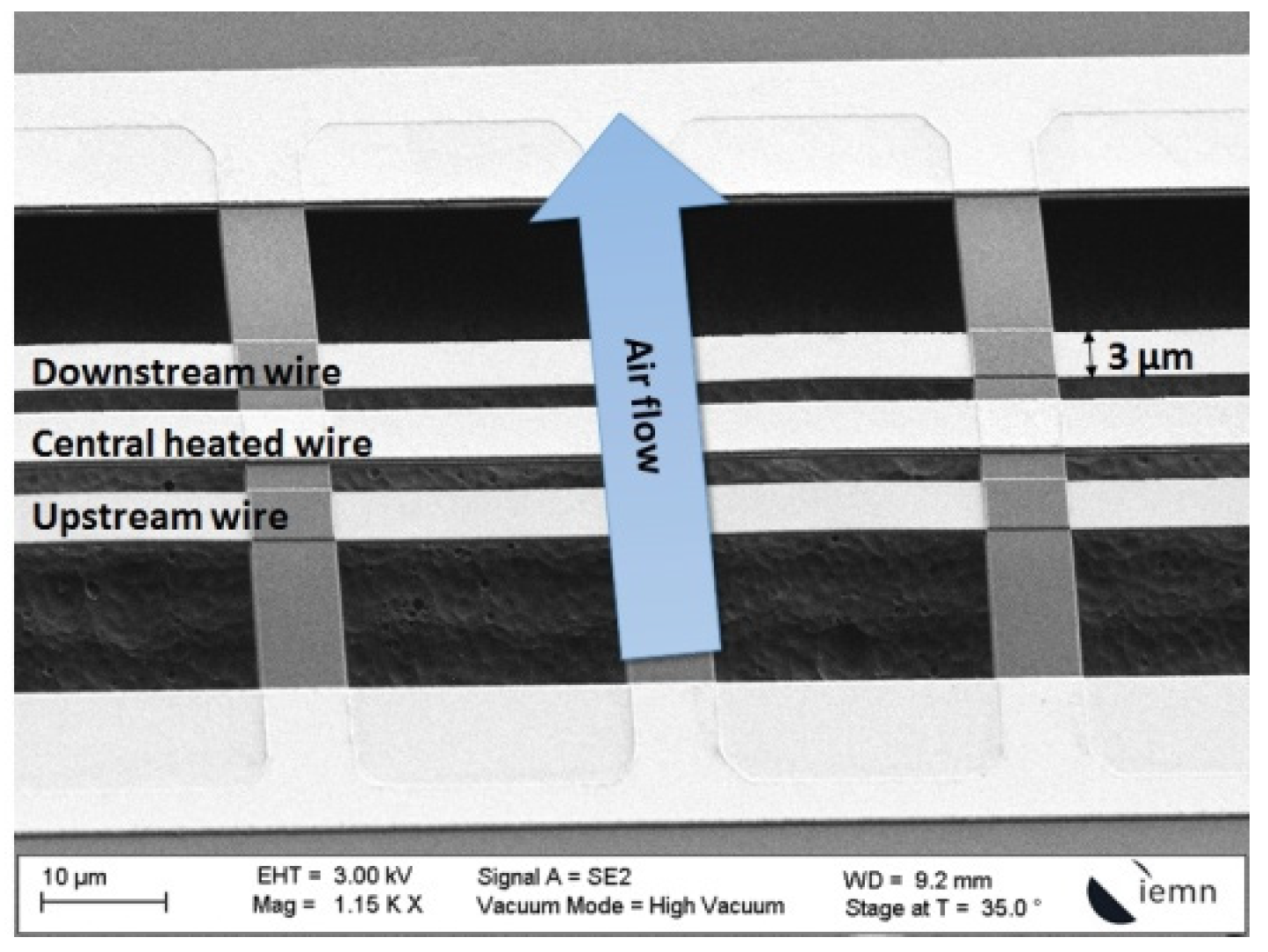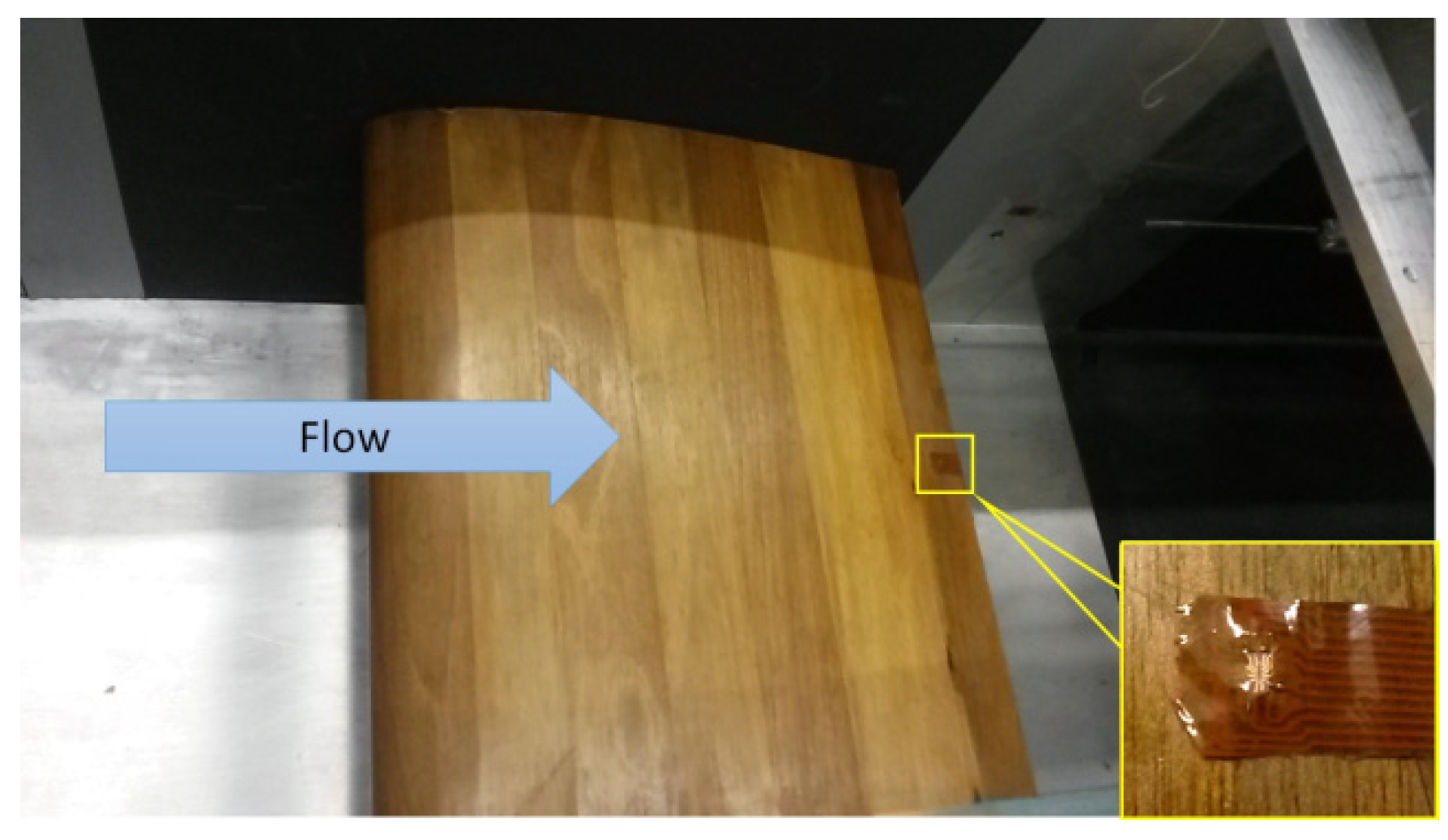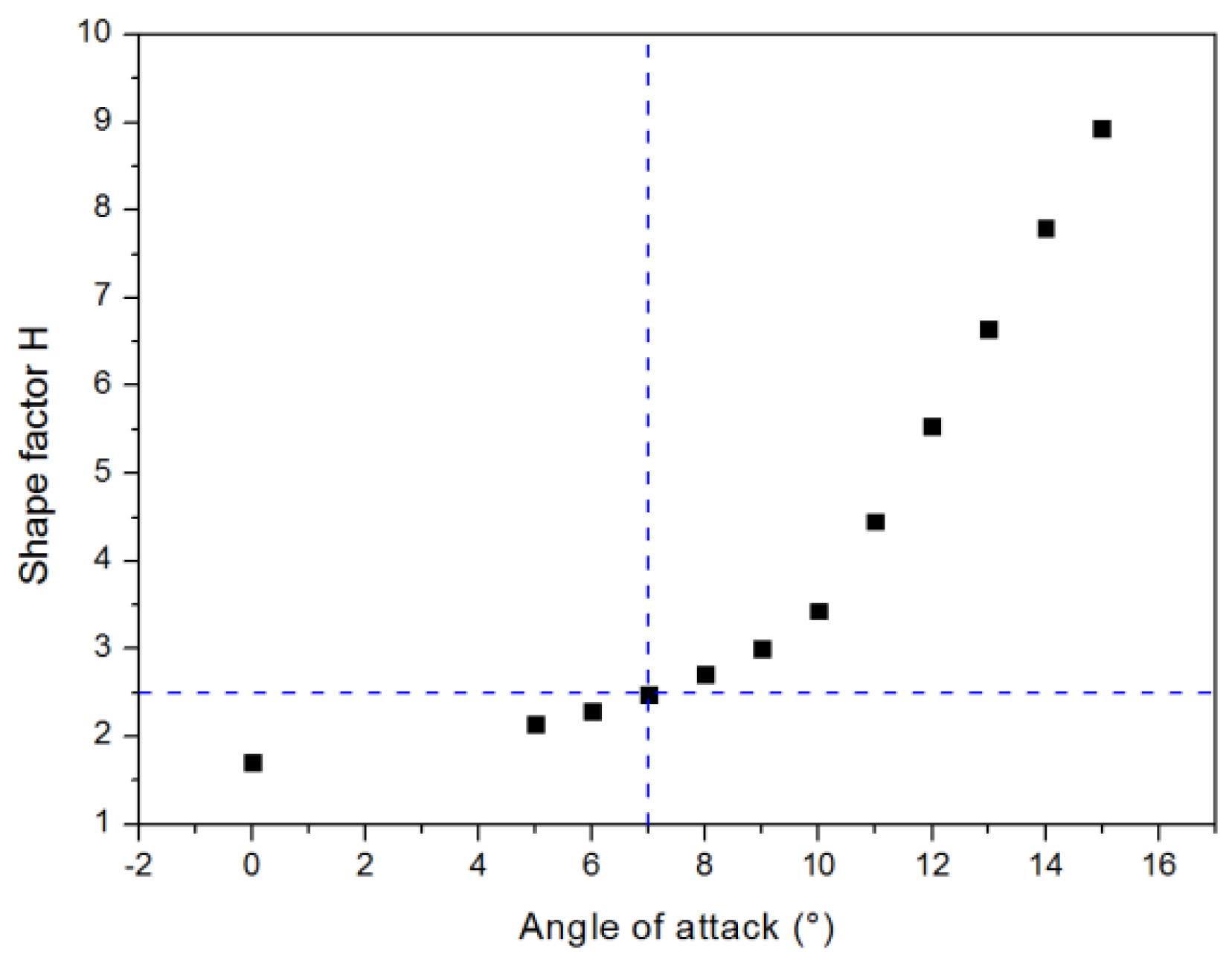Wall Shear Stress Calorimetric Micro-Sensor Designed for Flow Separation Detection and Active Flow Control †
Abstract
:1. Introduction
2. The Sensor Design
3. Experimental Setup
4. Results and Discussion
5. Conclusions
Acknowledgments
Conflicts of Interest
References
- Gad-el-Hak, M. Flow Control: The Future. J. Aircr. 2001, 38, 402–418. [Google Scholar] [CrossRef]
- Löfdahl, L.; Gad-el-Hak, M. MEMS-based pressure and shear stress sensors for turbulent flows. Meas. Sci. Technol. 1999, 10, 665. [Google Scholar] [CrossRef]
- Talbi, A.; Gimeno, L.; Gerbedoen, J.C.; Viard, R.; Soltani, A.; Mortet, V.; Preobrazhensky, V.; Merlen, A.; Pernod, P. A micro-scale hot wire anemometer based on low stress (Ni/W) multi-layers deposited on nano-crystalline diamond for airflow sensing. J. Micromech. Microeng. 2015, 25, 125029. [Google Scholar] [CrossRef]
- Miau, J.J.; Le, T.S.; Yu, J.M.; Tu, J.K.; Wang, C.T.; Lebiga, V.; Mironov, D.; Pak, A.; Zinovyev, V.; Chung, K.M. MEMS thermal film sensors for unsteady flow measurement. Sens. Actuators Phys. 2015, 235, 1–13. [Google Scholar] [CrossRef]
- Viard, R.; Talbi, A.; Merlen, A.; Pernod, P.; Frankiewicz, C.; Gerbedoen, J.C.; Preobrazhensky, V. A robust thermal microstructure for mass flow rate measurement in steady and unsteady flows. J. Micromech. Microeng. 2013, 23, 065016. [Google Scholar] [CrossRef]
- Ghouila-Houri, C.; Claudel, J.; Gerbedoen, J.C.; Gallas, Q.; Garnier, E.; Merlen, A.; Viard, R.; Talbi, A.; Pernod, P. High temperature gradient micro-sensor for wall shear stress and flow direction measurements. Appl. Phys. Lett. 2016, 109, 241905. [Google Scholar] [CrossRef]
- Ghouila-Houri, C.; Gerbedoen, J.C.; Claudel, J.; Gallas, Q.; Garnier, E.; Merlen, A.; Viard, R.; Talbi, A.; Pernod, P. Wall Shear Stress and Flow Direction Thermal MEMS Sensor for Separation Detection and Flow Control Applications. Procedia Eng. 2016, 168, 774–777. [Google Scholar] [CrossRef]
- Rebuffet, P. Aerodynamique Expérimentale: Cours professé à l’Ecole Nationale Supérieure de l’Aéronautique; Tome II, Editions Dunod; 1966. [Google Scholar]





Publisher’s Note: MDPI stays neutral with regard to jurisdictional claims in published maps and institutional affiliations. |
© 2017 by the authors. Licensee MDPI, Basel, Switzerland. This article is an open access article distributed under the terms and conditions of the Creative Commons Attribution (CC BY) license (https://creativecommons.org/licenses/by/4.0/).
Share and Cite
Ghouila-Houri, C.; Gallas, Q.; Garnier, E.; Merlen, A.; Viard, R.; Talbi, A.; Pernod, P. Wall Shear Stress Calorimetric Micro-Sensor Designed for Flow Separation Detection and Active Flow Control. Proceedings 2017, 1, 376. https://doi.org/10.3390/proceedings1040376
Ghouila-Houri C, Gallas Q, Garnier E, Merlen A, Viard R, Talbi A, Pernod P. Wall Shear Stress Calorimetric Micro-Sensor Designed for Flow Separation Detection and Active Flow Control. Proceedings. 2017; 1(4):376. https://doi.org/10.3390/proceedings1040376
Chicago/Turabian StyleGhouila-Houri, Cécile, Quentin Gallas, Eric Garnier, Alain Merlen, Romain Viard, Abdelkrim Talbi, and Philippe Pernod. 2017. "Wall Shear Stress Calorimetric Micro-Sensor Designed for Flow Separation Detection and Active Flow Control" Proceedings 1, no. 4: 376. https://doi.org/10.3390/proceedings1040376




